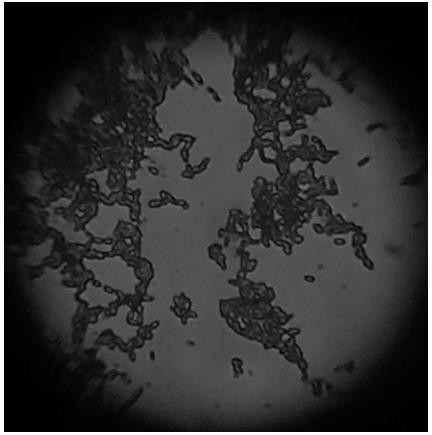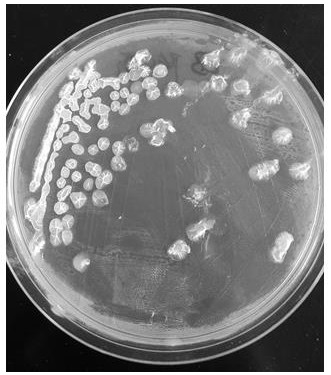Bacillus siamensis capable of degrading grease and application of bacillus siamensis in grease-containing wastewater
A bacillus and oil technology, applied in the field of environmental microorganisms, can solve problems such as oil degradation of Bacillus siamese that have not yet been reported
- Summary
- Abstract
- Description
- Claims
- Application Information
AI Technical Summary
Problems solved by technology
Method used
Image
Examples
Embodiment 1
[0058] Example 1: Screening, performance verification and identification of Bacillus siamese BS1
[0059] The oil-degrading Bacillus siamese BS1 according to the present invention is screened and collected from kitchen waste oil-containing wastewater.
[0060] enrichment culture:
[0061] Take 5 mL of the collected sample, add it to an Erlenmeyer flask containing 100 mL of enriched medium, and place it on a constant temperature culture shaker for cultivation.
[0062] Composition of enrichment medium: soybean oil 10 g / L (soybean oil brand: Arowana, the soybean oil used below is the same brand), trypsin 5 g / L, yeast powder 10 g / L, sodium chloride 10 g / L L; adjust the pH to 6.8.
[0063] The culture conditions were 30 °C and 200 rpm, and the culture was terminated after 36 h. After the end, take out 5 mL of culture and inoculate it in fresh enriched medium for subculture. The final culture is used to isolate target microorganisms.
[0064] Isolation and Purification:
[00...
Embodiment 2
[0086] Example 2: Performance of Bacillus siamese BS1 at different temperatures
[0087] Bacillus siamese BS1 was inoculated into the oil medium containing 2 g / L soybean oil, the culture temperature was controlled at 30 °C, and the speed of the constant temperature culture oscillator was 200 rpm, and the culture was completed for 12 h. The resulting culture was used as seed for subsequent validation.
[0088] The cultured seeds were inoculated in 100 mL of oil medium containing soybean oil with a concentration of 10 g / L according to the inoculation amount of 5%. . Then, the Erlenmeyer flasks were placed in a constant temperature culture shaker with temperatures of 15 °C, 25 °C, 30 °C, 37 °C, 40 °C, and 45 °C, respectively, and the speed of the constant temperature culture shaker was controlled at 200 rpm. During the culture process, 1 mL samples were taken every 6 h until the end of 48 h. The 1 mL sample taken was detected by a spectrophotometer with the absorbance value OD...
Embodiment 3
[0090] Example 3: Performance of Bacillus siamese BS1 under different dissolved oxygen
[0091] Bacillus siamese BS1 was inoculated into the oil medium containing 2 g / L soybean oil, the culture temperature was controlled at 37 °C, and the speed of the constant temperature culture oscillator was 200 rpm, and the culture was completed for 12 h. The resulting culture was used as seed for subsequent validation.
[0092] The cultured seeds were inoculated in 100 mL of oil medium containing soybean oil with a concentration of 10 g / L according to the inoculation amount of 5%. . Then, the Erlenmeyer flasks were placed in a constant temperature culture shaker with a rotating speed of 100 rpm, 150 rpm, 200 rpm and 250 rpm, respectively, at 37 °C, and the speed of the constant temperature culture shaker was controlled at 200 rpm. During the culture process, 1 mL samples were taken every 6 h until the end of 48 h. The 1mL sample was taken and the absorbance value OD at 600 nm was detec...
PUM
 Login to View More
Login to View More Abstract
Description
Claims
Application Information
 Login to View More
Login to View More - R&D
- Intellectual Property
- Life Sciences
- Materials
- Tech Scout
- Unparalleled Data Quality
- Higher Quality Content
- 60% Fewer Hallucinations
Browse by: Latest US Patents, China's latest patents, Technical Efficacy Thesaurus, Application Domain, Technology Topic, Popular Technical Reports.
© 2025 PatSnap. All rights reserved.Legal|Privacy policy|Modern Slavery Act Transparency Statement|Sitemap|About US| Contact US: help@patsnap.com



